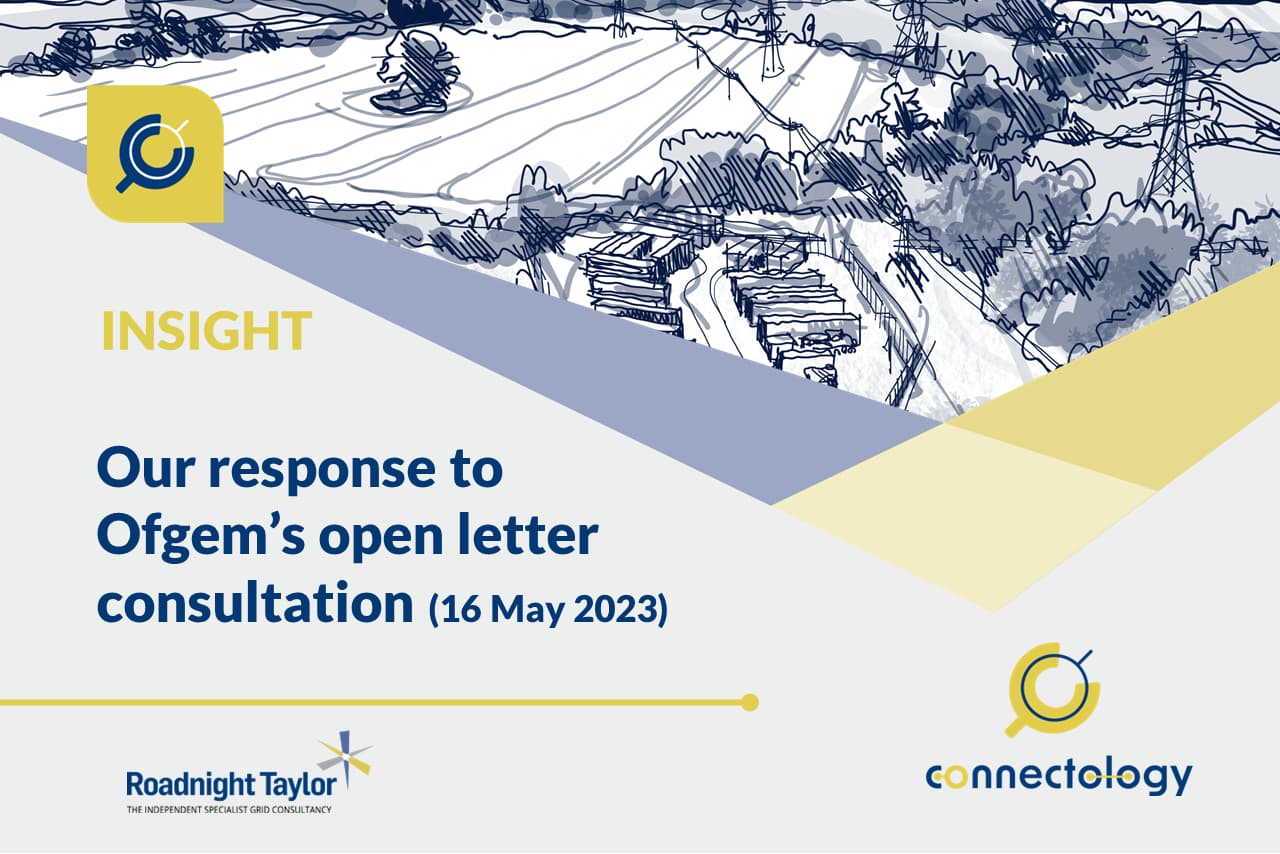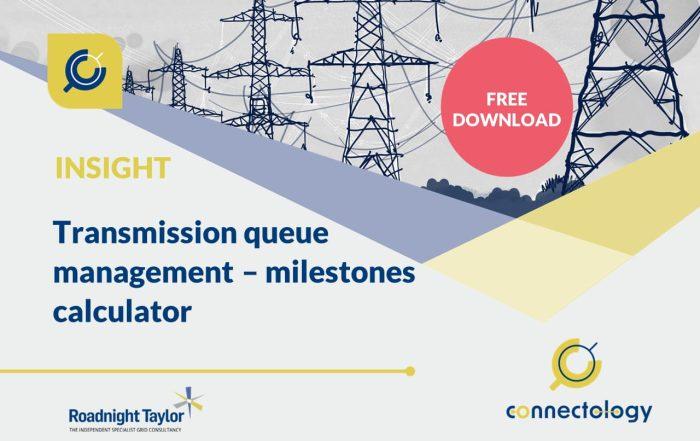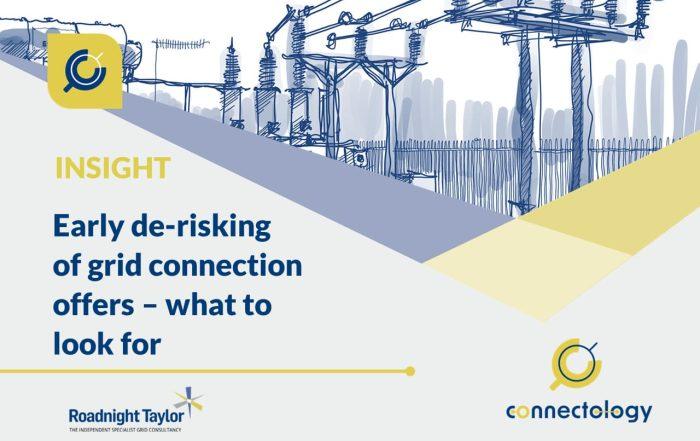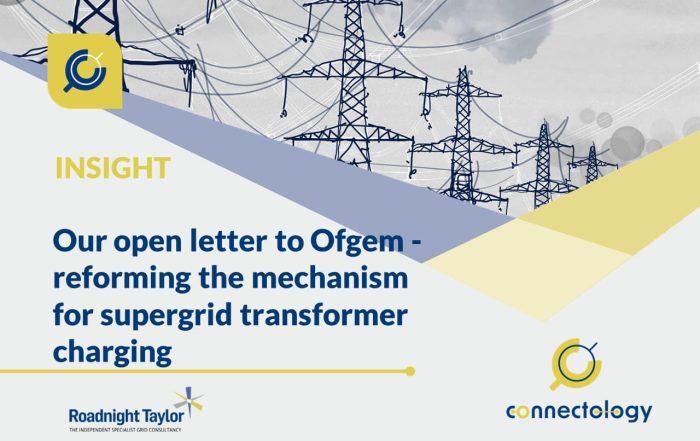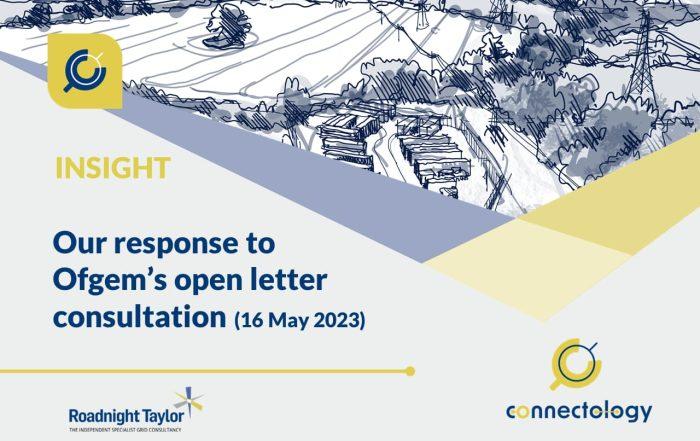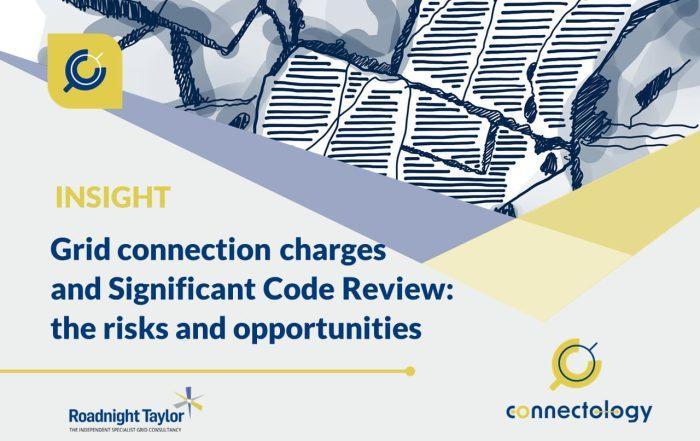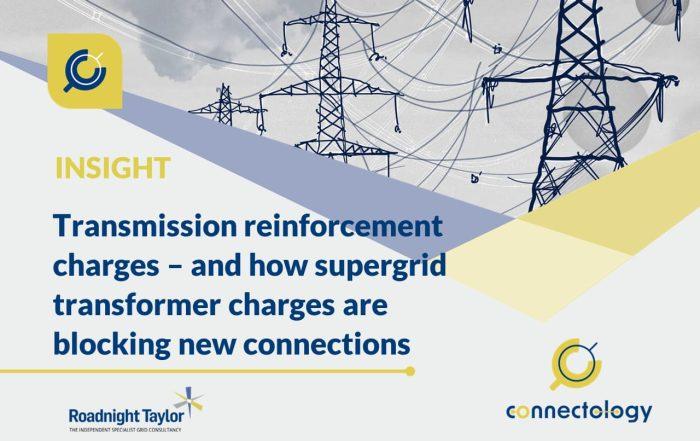Our response to Ofgem’s open letter consultation
(16 May 2023)
(16 May 2023)
On 16 May 2023, Ofgem launched a policy review on reforming the electricity connections system. They invited stakeholders to submit feedback on their open letter by 16 June 2023. This is our response, led by Pete Aston.
Article by Pete Aston – acknowledged expert in networks
Pete joined Roadnight Taylor from Western Power Distribution, the UK’s largest DNO, where he was Primary System Design Manager. He led a team of sixty responsible for all connections to the extra high voltage network, as well as leading WPD’s interaction with National Grid (NGET and NGESO) at the transmission/distribution boundary.
16 June 2023

On 16 May 2023, Ofgem launched a policy review on reforming the electricity connections system. In an open letter to the energy sector, Ofgem set out potential options to deliver new connections at scale to meet long-term energy demand with offshore wind, solar, new nuclear and other generation – alongside Ofgem’s work building strategic network investment and efficient, flexible network management. Ofgem invited stakeholders to submit feedback on their open letter by 16 June 2023.
Working with grid connections day-in-day-out, our Connectologists® are superbly placed to respond to Ofgem’s proposals. Their response, led by Pete Aston, is below. You may also find our Connectology® podcast on Connections Reform of interest.
Roadnight Taylor believes that the following areas are the key points of focus as part of the connections reform:
Outcome 1: transparent, consistent data giving applicants advance, granular insight into expected grid capacity and level of network investment needed
-
Publish demand data for accepted connections at distribution and transmission
- Whilst accepted generation schemes are published for both distribution networks (the Embedded Capacity Registers) and transmission networks (the Transmission Entry Capacity register), no accepted demand application data is published
- This frequently hampers the ability for developers to fully understand the network and to submit appropriate and sensible applications, and as a result causes the network companies to have to handle applications that are unlikely to be accepted
- This should be included as part of a licence condition, like the ECR
- Publishing the demand data will ultimately save time and effort for everyone
Outcome 2: more robust connection applications, enabling well-progressed projects to proceed
-
Make it harder to enter the queue
- It has been too easy for customers to make applications to the transmission network. Specifically, the lack of needing to provide a redline boundary for land parcels means that developers don’t need to undertake much work on land prior to an application. As a minimum, add a requirement to include a redline land boundary with letters of authority from land owners
-
Make it faster for people to leave the queue
- The upcoming introduction of milestones with automatic termination for transmission connections is going to give developers reason to give careful consideration as to the viability of the scheme and appropriate timescales to adhere to. It would be sensible to look at DNO milestones as well, as the existing milestones are not well policed and are easily extended
-
Readiness to connect
- Basing the queue on readiness to connect, rather than first to apply, makes a lot of sense, because most networks are only full on paper, rather than full in real life
- However, there are complexities with this around reinforcement charging. If a customer with a later application date is brought forward, do they not then need to pay for the reinforcement that was included in their offer, and does the customer they jumped ahead of now pick up the reinforcement charge? Or does the reinforcement charge stay with the customer, but paid after the connection is made, as and when the reinforcement work happens?
- And how will this work across the T-D boundary? D customers are usually able to build and connect faster, so does this mean that they can connect ahead of transmission customers who might be held back by the same reinforcement?
Outcome 4: Great co-ordination and consistency across system boundaries, supporting more consistent outcomes and efficient, co-ordinated approaches
-
Super-grid transformer charging
- Reinforcement of the super-grid transformers at Grid Supply Points is currently funded by the triggering distribution customer(s). The way the costs are allocated means that the charge is split by the accepted capacity, meaning that if customers terminate the offers, the customers who are left pick up a bigger proportion of the cost. This represents a huge risk to the developers, and can lead to difficulty obtaining financial investment
- Improvements in connection charges from the SCR reforms, are frequently made irrelevant with the large costs being incurred with SGT reinforcements
- If a Grid Supply Point happens to be at an Infrastructure site (where there are two or more DNOs or customers at the site), the reinforcements aren’t charged to customers, so it becomes a postcode lottery whether a customer is or isn’t charged for SGT reinforcement
- SGT reinforcements should, as a minimum, be applied on the basis of a Cost Apportionment Factor, such that the charge is fixed. Or the charges should be completely socialised (through DUOS or TNUOS)
- There is a distortion in the design solution and charging arrangement for some tertiary winding connections. Customers have for some years been applying to NGESO for transmission connections to tertiary windings of existing supergrid transformers, for capacities up to 60MVA. To overcome technical issues around this type of connection, NGESO has been choosing to change the design solution and offer two or more tertiary winding connections at a site a shared 400/33kV transformer, which is classed as a reinforcement asset and therefore not paid for by the tertiary winding customers. It does not appear appropriate (even if it is within the rules) for NGESO to offer two or more tertiary connections such a new infrastructure 400/33kV transformer with the costs for said SGT being funded by general bill payers through TNUoS, especially where similar sized distribution connections at the same GSPs would have to fully fund reinforcement of the supergrid transformers. It appears to be a distortion of the market which benefits certain transmission customers and is not available for distributed generation customers. This reinforces the points made above, that the current arrangements don’t work, they distort the charging arrangements and they provide a barrier to connection
-
Transmission assessment thresholds for distribution schemes
- All distribution generation (and some demand) schemes need to go through a transmission assessment process prior to being allowed to connect. This typically requires a Project Progression or Modification Application
- The threshold in England and Wales has been 1MW for some time, but the application of this threshold has been inconsistently applied, as there is no published guidance from NGESO. Some DNOs have applied the 1MW threshold to export capacity, and other DNOs have applied it to installed capacity. Consistent guidance is crucial, and needs to be implemented quickly
- The threshold needs to be raised, certainly in terms of installed capacity, so that businesses have the opportunity to try and reach net zero for themselves. Many businesses are now being prevented from installing generation on their sites, because it will reduce the apparent demand of the site, as seen by the network company. This isn’t right, so the thresholds need to be raised
Other areas of concern
-
Investment ahead of need
-
- As planning starts for the ED3 period, Ofgem needs to consider whether DNOs are suitably funded for investment ahead of need. If the DNOs were genuinely free to invest to create capacity on the network, then it would help to facilitate connections where they are needed
- For example, SP Manweb’s network, compared to most other distribution networks, is very heavily meshed / interconnected. This has worked very well for demand security, but tends to work against generation connections, particularly in relation to very low design fault levels, giving very little fault level headroom for generation. Unpicking this meshed network is likely very expensive, but does Ofgem view this type of development as the sort of strategic investment it wants DNOs to do, to facilitate generation? And does the regulatory framework allow this spend to happen?
- Ofgem should try to understand whether the DNOs are truly preparing the network for the areas where growth is predicted to happen, for example by securing land well ahead of time for new substations, obtaining planning permission, etc
- Do DNOs need longer price control periods? Some types of development, such as new Grid Supply Points (in conjunction with transmission owners), can easily take more than 5 years to plan and build. If not longer price control periods, then do DNOs need the comfort that they can start projects in one period and be funded to complete the work in the next period?
Contact us
For information on Roadnight Taylor’s services, call us on 01993 830571 or send us a message via our contact form.

